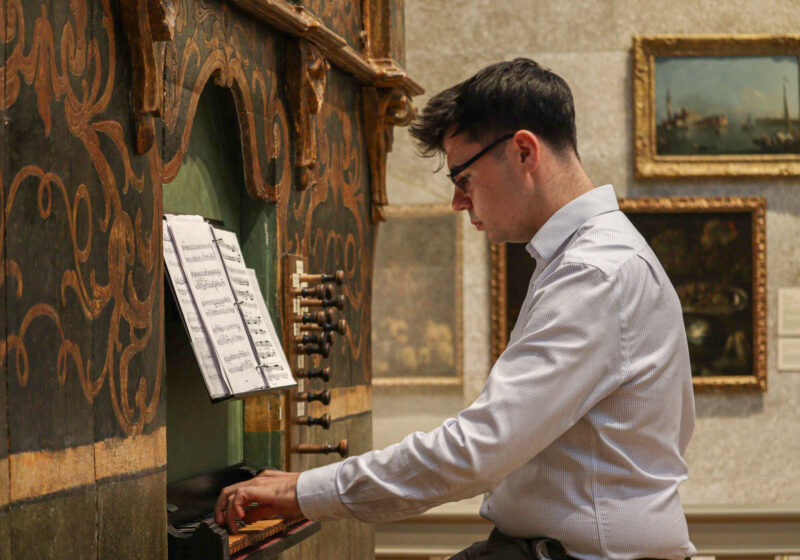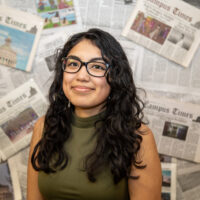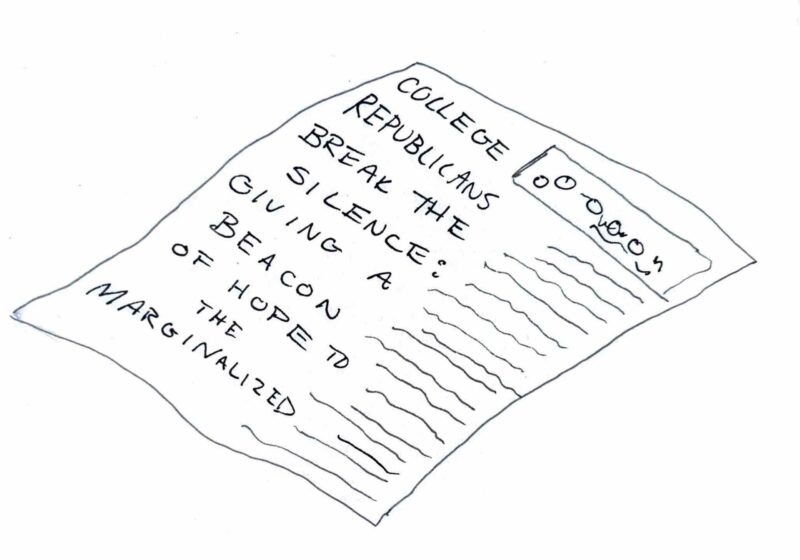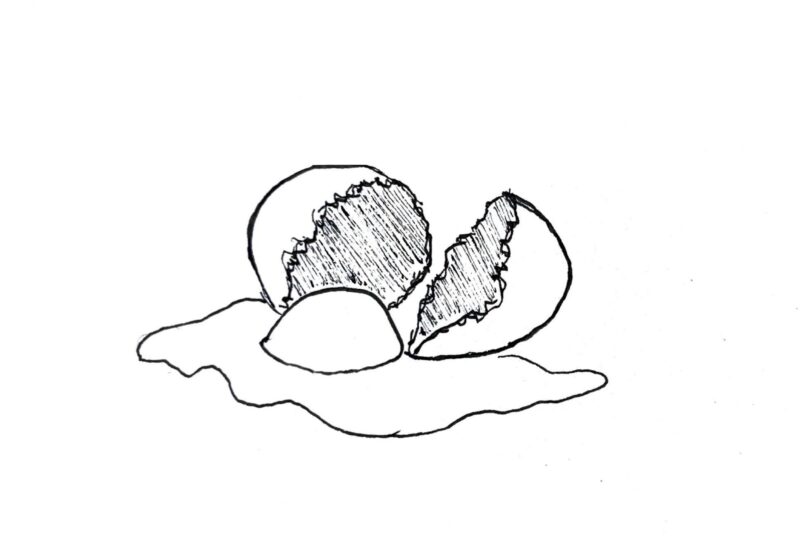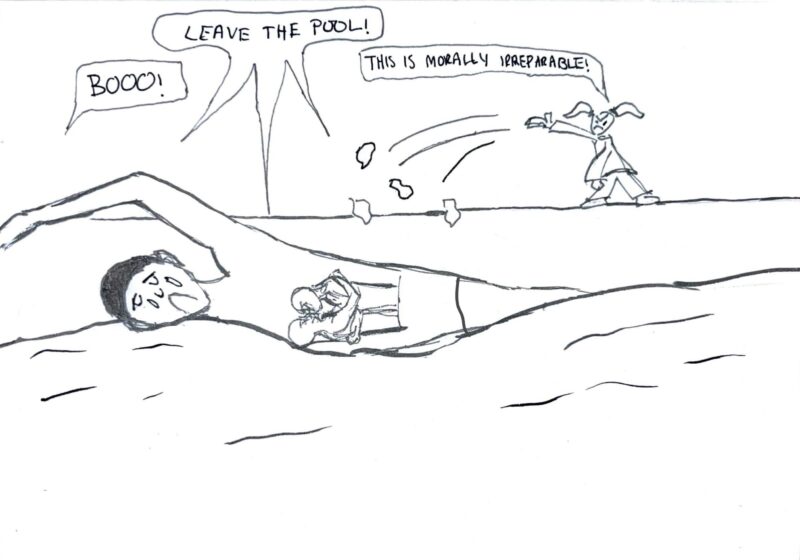At the heart of the Memorial Art Gallery (MAG), you’ll find the Fountain Court, with walls lined with Italian-influenced portraits, landscapes, and religious and mythological paintings from the European Baroque period. At the far end of the room lies the Eastman Italian Baroque Organ, the only full-sized Italian Baroque organ in the Western Hemisphere.
In partnership with the MAG, every Sunday at 1:30 and 3 p.m., students from the Eastman School of Music conduct mini-recitals for the general public.
In 2005, David Higgs, Chair of the Department of Organ, Sacred Music, and Historical Keyboards, and his colleagues were responsible for retrieving the organ, originally found in an Italian antique shop, all the way from Europe.
Curator and MAG liaison for the program, Nancy Norwood, has been involved with the program since the beginning. She explained, “It’s been almost 20 years, and it’s a long time, but it has gone really well, and there are several generations now of organists, professional organists, who were trained on this organ.”
The MAG has the baroque organ on permanent loan. It has always been intended to be used by students for both practice and performances.
“It’s been great for […] the community also, because so many people come and hear. So many times, organs are only in churches, so this gives us a place to play where a wider variety of people might come,” Higgs explained.
And with two performances every week, every student ends up performing more than once.
Second-year master’s student Charles Francis welcomes the opportunity to perform in front of an audience.
“All of us genuinely enjoy sharing music because being an organist often requires being quite an outgoing person in some ways, because you have to lead choirs and you have to talk about the instrument,” Francis said. Being an organist means “you do end up becoming a historian in many ways.”
Francis started playing the organ at 12 years old after finding it in his local church. When performing at the MAG, he likes to mix up the pieces he plays to highlight the different musical styles the organ can be used for. Francis said, “The biggest thing is just deciding what I’d really love the people to walk away with after 25 minutes.”
Students open their performance with their own lecture on their chosen piece. It’s also a chance for students to highlight the full capabilities of the instrument, beyond just what the audience hears.
One special effect Francis has highlighted on the organ is the “nightingale stop,” a unique effect in which the organ mimics birdsong.
“For me, it’s just the sheer amount of possibility that exists. It’s music that exists. The music of the organ goes back to before we could even notate it, so there’s a great history there that really needs unpicking, and it’s not just that, but it’s also so tied to the country that it’s in,” Francis said.
Second-year doctoral student Yuhe Su also showed off this effect in her presentation. Su is similarly amazed by the age and history of the organ, apparent even from the feel of the keys, which have deep grooves from the other hands that’ve played before hers.
Su started playing the organ as a young teen but started playing piano when she was four. She’s previously performed several times at the MAG.
Talking about why people come and watch the recitals, Su said, “I know some audiences. They come here every Sunday since they know different performers play. And they want to enjoy and experience different styles, different pieces.”
Su pointed out that the organ allows people to get in touch with the Baroque period as they are surrounded by the paintings in the Fountain Court. When she plays, there’s “a visual and acoustic effect happening.” She hopes that her music “can bring [the audience] back to the Baroque period.”
Francis felt similarly, sharing, “To be able to go back and listen to organ pipes that were heard by people in the 1680s is incredible and allows you to travel in time, especially when you hear the music that was written back then too.”
“To really get in touch with those historical roots is a real special gift,” he said, “and I think it’s definitely worth exploring for anyone who’s in the area.”
